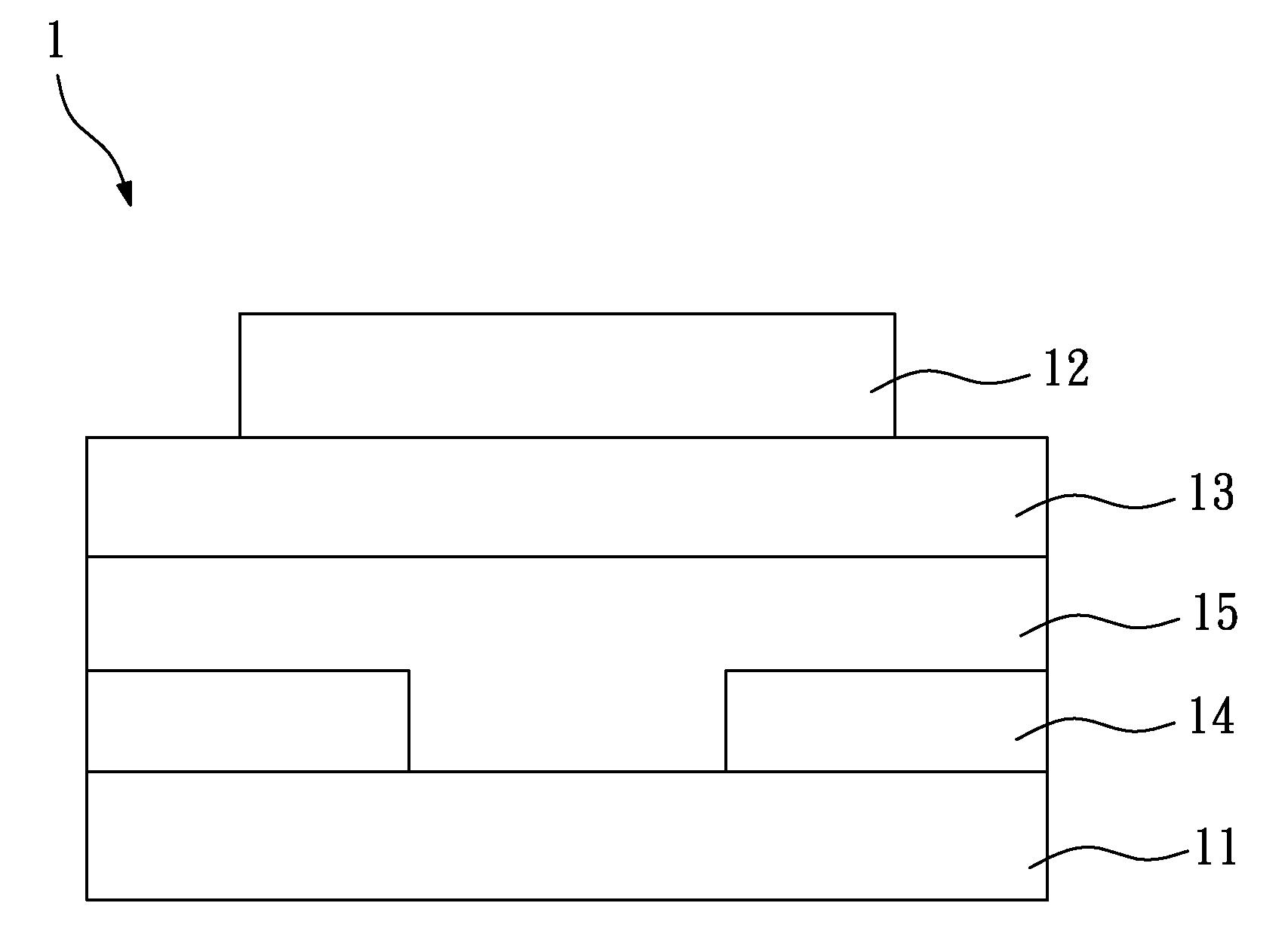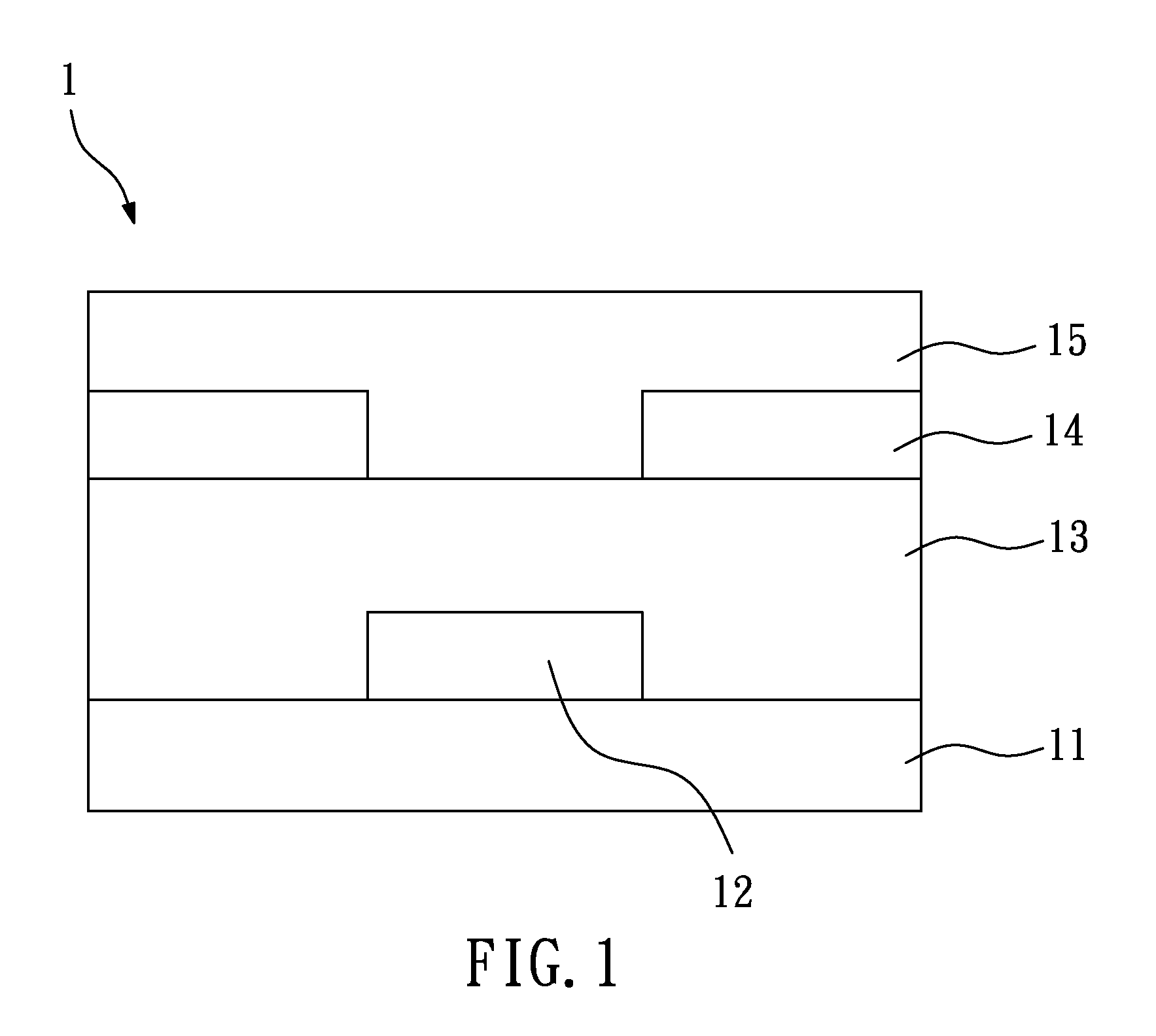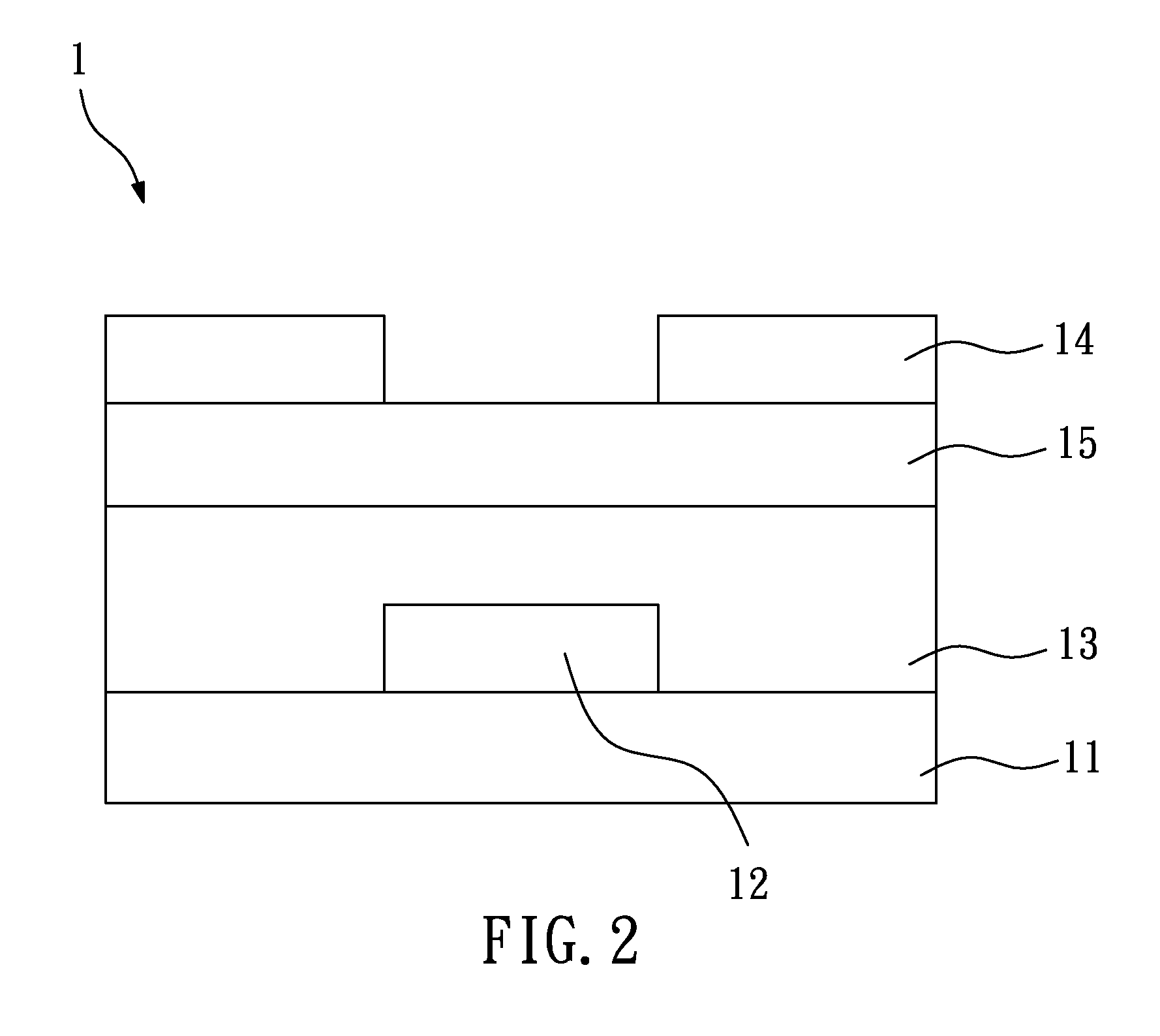Fabrication method of organic thin-film transistors
- Summary
- Abstract
- Description
- Claims
- Application Information
AI Technical Summary
Benefits of technology
Problems solved by technology
Method used
Image
Examples
Embodiment Construction
[0023]FIG. 1 is a schematic view of an OTFT according to the present invention. In the fabrication method of OTFTs of the present invention, an organic gate layer 12, an organic dielectric layer 13, an organic source / drain electrode layer 14, and an organic semiconductor layer 15 are formed on a substrate 11 by micro-contact printing, so as to form an OTFT 1. In this embodiment, the substrate 11 is a flexible or rigid substrate, and may be made of polyethylene terephthalate (PET), polycarbonate (PC), polyimide (PI), polyethylene naphthalate (PEN), polyethersulfone (PES), glass, silicon (Si), copper (Cu), or gold (Au). When a metallic substrate is used, there should be an insulation layer before fabrication of the OTFTs.
[0024]In this embodiment, the organic gate layer 12, the organic dielectric layer 13, the organic source / drain electrode layer 14, and the organic semiconductor layer 15 are sequentially formed on the substrate 11, so the OTFT 1 is a bottom-gate OTFT (as shown in FIG....
PUM
 Login to View More
Login to View More Abstract
Description
Claims
Application Information
 Login to View More
Login to View More - R&D
- Intellectual Property
- Life Sciences
- Materials
- Tech Scout
- Unparalleled Data Quality
- Higher Quality Content
- 60% Fewer Hallucinations
Browse by: Latest US Patents, China's latest patents, Technical Efficacy Thesaurus, Application Domain, Technology Topic, Popular Technical Reports.
© 2025 PatSnap. All rights reserved.Legal|Privacy policy|Modern Slavery Act Transparency Statement|Sitemap|About US| Contact US: help@patsnap.com



